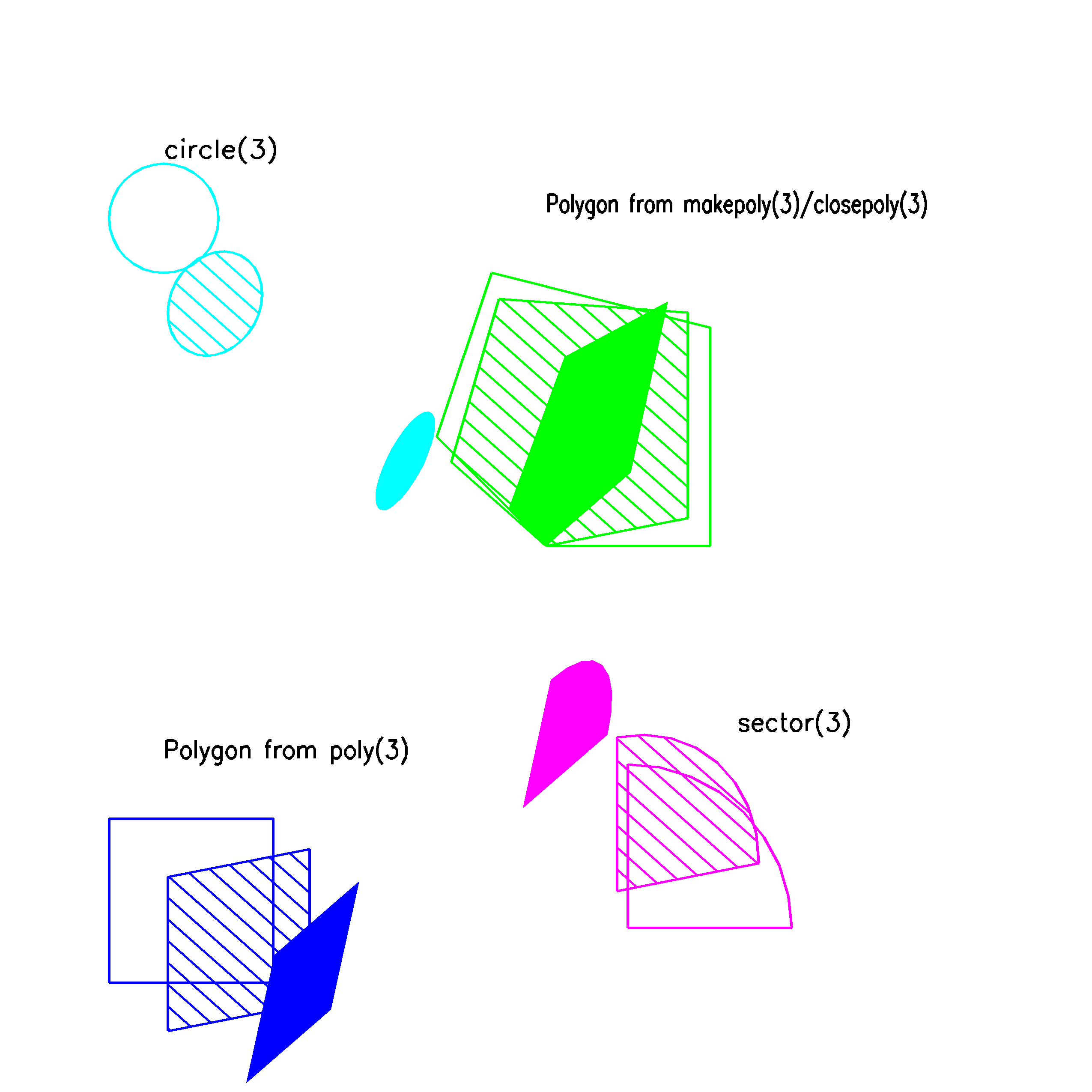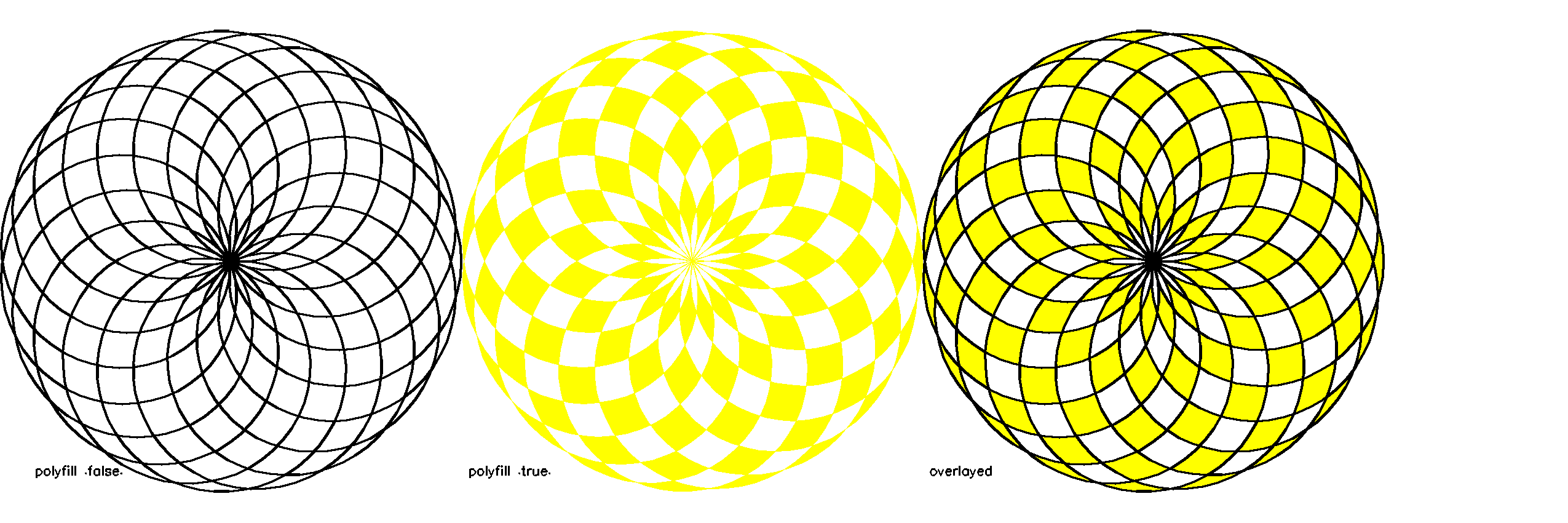A polygon is composed of a number of coplanar line segments connected end to end to form a closed shape.
In VOGLE curves are estimated by a series of line segments, and thus may be included easily into polygons.

Draw a rectangle. Note: rectangles are regarded as polygons, so if polyfill or polyhatch has been called with 1, the rectangle will be filled or hatched accordingly.
Fortran:
subroutine rect(x1, y1, x2, y2)
REAL x1, y1, x1, y2
C:
vogle_rect(x1, y1, x2, y2)
float x1, y1, x2, y2;
Pascal:
procedure Rect(x1, y1, x2, y2: real)

Set the polygon fill flag. This will always turn off hatching. A non-zero integer or LOGICAL .true. turns polyfill on.
Fortran:
subroutine polyfill(onoff)
logical onoff
C:
vogle_polyfill(onoff)
int onoff;
Pascal:
procedure PolyFill(onoff: boolean)

Set the polygon hatch flag. This will always turn off fill. A non-zero integer or LOGICAL .true. turns polyhatch on. Note that hatched polygons must initially be defined parallel to the X-Y plane.
Fortran:
subroutine polyhatch(onoff)
logical onoff
C:
vogle_polyhatch(onoff)
int onoff;
Pascal:
procedure PolyHatch(onoff: boolean)

Set the angle of the hatch lines. The angle is in degrees. Zero degrees is on the negative X axis. Positive values are counterclockwise. The value is 0 at program initialization. The last value set is retained even if hatching is not active or is turned on and off.
Fortran:
subroutine hatchang(angle)
real angle
C:
vogle_hatchang(angle)
float angle;
Pascal:
procedure HatchAng(angle: real)

Set the distance between hatch lines. The distance is measured in window units (as opposed to viewport or device units).
Fortran:
subroutine hatchpitch(pitch)
real pitch
C:
vogle_hatchpitch(pitch)
float pitch;
Pascal:
procedure HatchPitch(pitch: real)

Construct an (x, y) polygon from an array of points provided by the user.
Fortran:
subroutine poly2(n, points)
integer n
real points(2, n)
C:
vogle_poly2(n, points)
int n;
float points[][2];
Pascal:
procedure Poly2(n: integer; points: Poly2_array_t)
Construct a polygon from an array of points provided by the user.
Fortran:
subroutine poly(n, points)
integer n
real points(3, n)
C:
vogle_poly(n, points)
int n;
float points[][3];
Pascal:
procedure Poly(n: integer; points: Poly3_array_t)
makepoly opens up a polygon which will then be constructed by a series of move-draws and closed by a closepoly.
Fortran:
subroutine makepoly
C:
vogle_makepoly()
Pascal:
procedure MakePoly
Terminates a polygon opened by makepoly.
Fortran:
subroutine closepoly
C:
vogle_closepoly()
Pascal:
procedure ClosePoly
Turns on culling of backfacing polygons. A polygon is backfacing if it's orientation in *screen* coords is clockwise, unless a call to backfacedir is made.
Fortran:
subroutine backface(onoff)
logical onoff
C:
vogle_backface(onoff)
int onoff;
Pascal:
procedure BackFace(onoff: boolean)
Sets the backfacing direction to clockwise or anti-clockwise depending on whether clockwise is 1 or 0. 1 = clockwise (in screen coords) 0 = anticlockwise.
Fortran:
subroutine backfacedir(clockwise)
integer clockwise
C:
vogle_backfacedir(clockwise)
int clockwise;
Pascal:
procedure BackFaceDir(clockwise: boolean)